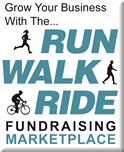Dog Walks Raise Funds for Animal and Health Groups
Tapping into the passion people have for their pets, an increasing number of nonprofits are creating fundraising dog walks that are either stand alone events or add ons to two-legged programs.Founded in 1998, The Mighty Texas Dog Walk is America's largest fundraising dog walk, according to Sheri Soltes, president of Texas Hearing and Service Dogs, the event's organizer.
In 2009, that added up to 8,333 canines crossing the finish line, second in the world to the Butcher's Great North Dog Walk in England, according to the Guinness Book of World Records. The three-mile April stroll in Austin, Texas attracted approximately 20,000 human participants.
The Might Texas Dog Walk is the organization's largest fundraiser ($135,000 in 2009), but Soltes is clearly more focused on capturing the world record than on maximizing revenue. Participants are not asked to do any fundraising. They only pay an entry fee of $25 or $30.
"Looking at the dog bowl as half full, our progress is amazing," THS&D; crows on the event website. "With the awesome turnout we had this year magnified by word of mouth, next year’s win should be in the bag!"
Managing a successful dog walk requires sensitivity to the health needs of the four-legged participants. The biggest dangers are overheating and dehydration. Among the special preparations Soltes recommends are:
-- Plenty of water stops and ice to cool down hot dogs
-- Veterinary staff on hand to deal with everything from dehydration to injured paws (Dog walks should always be held in cooler months. Hot asphalt can literally burn a dog's paw pads.)
-- Distribution of "poop bags" to all participants and placement of adequate receptacles along the course.
Interestingly, Soltes finds that barking is not a problem. "It's incredible. Nobody barks. The dogs are so stunned" to be in such a huge group," she said.
It appears that most fundraising dog walks in the US are run by animal-related groups, but there are a growing number of events that raise funds for health and social service groups. Examples include:
The Arthritis Foundation has embraced dog walks as a promising growth area for its Arthritis Walk series. (Dog walks are a particularly good fit for AF because dog walking can be beneficial to many people with arthritis.) The foundation offers a variety of planning tools for dog walk chairs online.
Bark for Life is the name given by the American Cancer Society to dog walking events tied to its enormous Relay for Life program. In a guidebook, ACS lists many potential benefits such as additional fundraising, attracting new participants, increased media coverage, new sponsorship opportunities. It warns that there is risk of a mixed message and advises organizers to stay focused that the event is about celebrating human survivorship. In 2008, the Bark for Life in Pottstown, PA raised over $90,000. Some ACS chapters are also holding fundraising "Paws for a Cause" dog walks.
Dogtoberfest is an annual Halloween-themed fundraiser in Jacksonville, Florida benefiting First Coast No More Homeless Pets in which humans and canines dress up in costume.
The Howlywood Paws of Fame Dog Walk benefitting the Inland Valley Humane Society and SPCA.
ShelterFundraising.com offers more advice on dog walks. One outrageous idea to garner media attention: To really increase your fundraising turnout, name a dog "Naked" and get a local celebrity (television or radio personality, sports star, public official, etc) to "Walk Naked in the park at a designated time."



